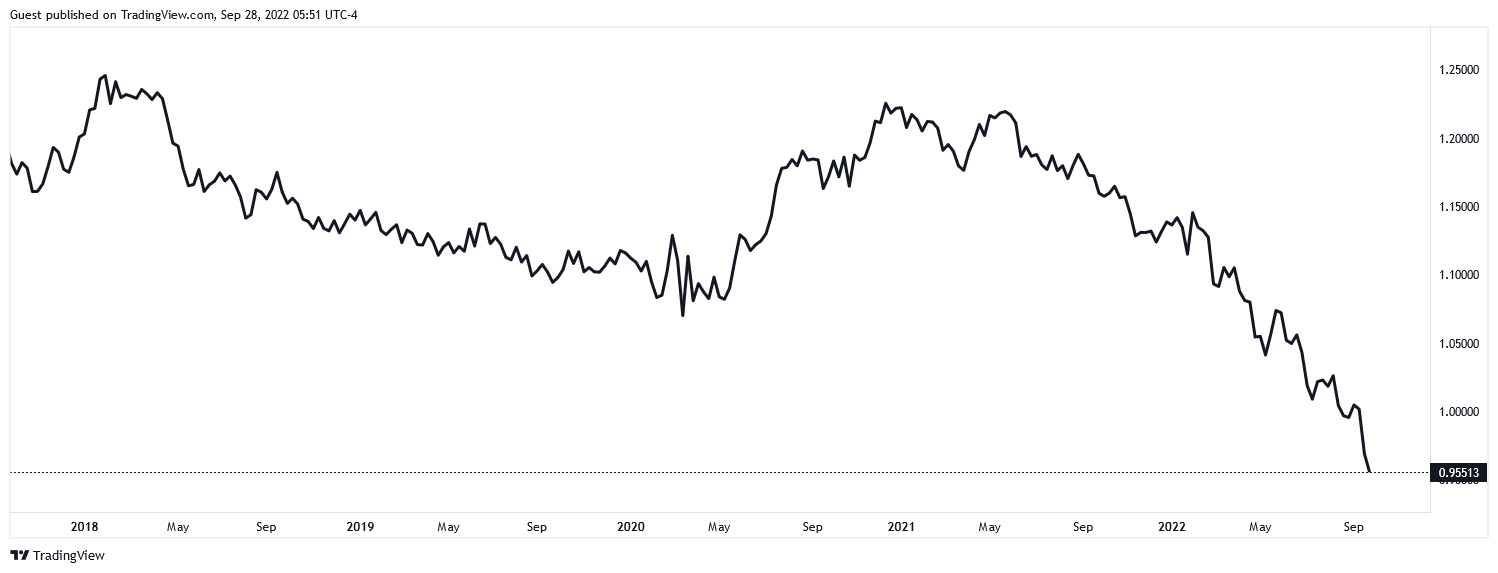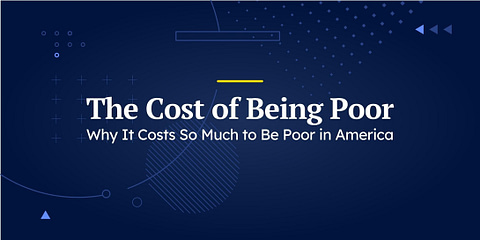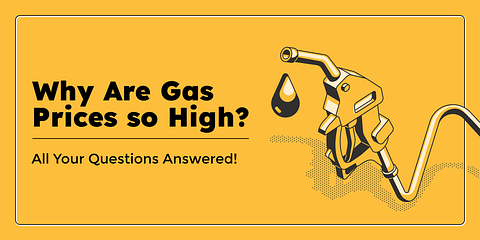If you live in Europe, you are most likely acutely aware of the unfolding European energy crisis. If you’re not, your next gas or power bill will remind you.
If you live in the USA, you might not have paid much attention to it. You should, because it might be the next big story in financial markets and the world at large.
Let’s look at why the European energy crisis matters, how it happened, and how it will affect companies and investors.
1. Why the European Energy Crisis Matters
It is often easy for investors to ignore crises on other continents, which may not seem to affect them. This has been less true in the last few years, as globalized supply chains have brought troubles in faraway countries closer to home.
In addition, a crisis engulfing all of Europe is different from a more localized problem in a small country. Europe is responsible for 15% of global GDP, with 6 countries delivering a national GDP above 1 trillion dollars (Germany, UK, France, Italy, Spain, and the Netherlands).
The price of all energy sources is exploding in the EU and the rest of Europe. This is not only true for gas. Electricity prices are up 5 to 10 times, depending on the country. And this is down 50% from a spike at x20.

At first, the situation was brushed off as “we can take fewer long hot showers and lower the thermostat”. This ignores much more serious secondary effects.
A key consequence has been an explosive rise in costs for heavy industries. The most heavily industrialized country in the EU, Germany, is a prime example of the problem.
Germany’s PPI (Producer Price Index), the metric representing the input costs for industrial manufacturers, has gone up 45% year to year, with no sign of slowing down in its meteoric rise.

This means that anything produced in the country is now costing 45% more, massively outpacing the general inflation rate (CPI) of 7.9%.
One consequence is a massive loss of competitiveness for the European industry. Another is renewed strong inflationary pressures.
Lastly, this could provoke more disruptions in supply chains that have barely recovered from the pandemic.
You might think this affects mostly large companies like steel mills Arcelor Mital or BASF. But this is also a disaster for countless SMEs, with potentially half of SMEs facing bankruptcy in the UK, including businesses like pubs and bakeries.
2. What Happened?
Like most crises, Europe’s energy crunch has multiple interacting causes. Let’s look at some.
A Tight Global Energy Market
Oil and natural gas prices crashed in 2014 and 2015, and remained depressed for several years, culminating in the COVID-driven collapse in 2020. This extended period of low prices led to a global shortfall in new investment in production infrastructure.
The post-COVID resurgence of demand pressed existing production to its limits, driving prices up in a generally tight supply environment.
Russia’s War in Ukraine
The short answer to the European energy crisis is to blame it all on Putin’s Russia. And for sure, a large part of the ongoing crisis is due to Russia using its gas supply to pressure European NATO countries that oppose Russia’s ambitions in Ukraine.
To top it all, on 27th September, the NordStream 1 & 2 pipelines supplying Germany have apparently been sabotaged. The pipeline crossing Ukraine is obviously at risk as well, leaving some observers wondering whether Europe will ever receive Russian gas ever again.
I think it is fair to say that the current crisis would never have reached such proportions without the Ukraine war.
This still raises a question: how did Europe end up being so dependent on Russian gas?
Fossil Fuels and Nuclear
The EU has been at the forefront of the movement to decarbonize the global economy. The USA has been slower to embrace renewables, while China and India are still building new coal-fired power plants.
One key feature of Europe’s energy transitions strategy has been to limit the development of local fossil fuel resources. For example, the plan to close the Dutch Groningen gas field by 2023 has removed one of Europe’s main domestic gas sources from production.
The region has also been vigorously opposing any fracking, unlike the USA. This drive to get past fossil fuel culminated in the 2021 Cop26 conference, in Glasgow, Scotland.
This was done in parallel with strong opposition to nuclear power. Germany closed 11 of its 17 nuclear power plants after the Fukushima disaster. It closed 3 more at the beginning of 2022. Of the remaining 3, only 2 will be kept in reserve for this winter. Even France, historically the world leader in nuclear, committed in 2018 to progressively close 1/4 of its nuclear power plants.
Renewables
In theory, the power generation lost by the cutback in nuclear and fossil fuel power should have been compensated by a massive build-up of solar and wind power. In practice, the rise in renewable barely compensated for the lost capacity. This led to a strong uptake in gas and even coal-powered plants.
In addition to insufficient total capacity, intermittence is a continuing problem with renewables. Solar only works well in the daytime and summer. Wind does not blow continuously for weeks at a time. Grid-scale batteries are too expensive and too few to compensate.
So the slack was picked up by Russian gas, used to power electric plants as well as to cover the extra winter consumption for heating buildings or growing food and flowers in Dutch greenhouses.
The Limits of Logic
From a geographical and economic perspective, Russia is the logical choice for Europe’s natural gas supply. Russia has the world’s largest natural gas reserves and produces far more than it consumes. Europe is one of the world’s leading consumers of gas. The two are close together with no mountain ranges, oceans, or other geographic obstacles between them.
This compelling geographic and economic logic led to the development of a huge pipeline net, carrying 75% of Russia’s gas output, linking Russian suppliers to European consumers. Pipeline gas is cheaper than ship-borne LNG and was an obvious choice for European buyers, just as sales to Europe were the obvious choice for Russian producers.
That overwhelming geographic and economic logic met a hard limit when Vladimir Putin sent his army into Ukraine, leaving Europe with an unwelcome choice between subsidizing aggression on their doorstep and cutting off their own energy supply.
Hard-to-Find Alternative Energy Supplies
The obvious solution to the interruption of Russian supply would be to get gas from somewhere else.
The problem is that it is not only Europe that is short in energy. For example, China has been plagued by coal and power shortages for 2 years. In addition, a severe drought this summer, over the whole northern hemisphere, has reduced hydropower generation in Norway, China, and the USA.
Then there are logistics. Gas is hard to transport over long distances. When pipelines are not (anymore) an option, the only alternative is LNG (Liquefied Natural Gas).
LNG requires massive and expensive facilities to first liquefy gas, and then turn it back into gas. It is also much more expensive than pipeline gas.
LNG export facilities in the US, Qatar, Australia, and other major exporters were already running at max capacity in 2021. LNG carrier ships might be hard to find as well. And anyway, Europe does not have enough re-gasification capacity at arrival.
So LNG is unlikely to be able to fully compensate for the loss of Russian gas for at least a few years.
One solution will probably be burning oil instead of gas. The French tire manufacturer Michelin is working on it, for example, and all Swiss power plants are preparing to do the same. Of course, this will do no good to oil prices or to carbon emissions.
3. What Are the Consequences?
Deindustrialization
EU rules prioritize gas for households and commercial buildings ahead of supply for factories, so gas is likely to be rationed for heavy industry. This will lead to closed factories, job losses, and economic decline.
This will likely lead to many European companies relocating production to places with cheaper energy, including the USA. It could also hurt the profits of US companies focusing on the European B2B markets.
Supply Chain Disruptions
To add to the industry woes, supply chains are under serious stress. Most European production of fertilizers, glass, paper, and metal is stopping or already stopped.
This might lead to multiple shortages, from aluminum cans to toilet paper or even pharmaceutics.
It might also fuel a second global wave of inflation, especially in food products. If European production falls, European consumers will look to buy elsewhere, raising demand and prices worldwide.
Euro Crashing
In addition to the energy crisis, the rising dollar has pushed almost all world currencies down over the last few months. This has been especially brutal for the Eurozone.

In one way, this might help European companies, as it will make their export cheaper on a dollar base. At the same time, it will make European inflation even worse, with every imported good costing more, including oil and gas. If European factories can’t produce goods to export, an exchange rate advantage can’t help them, and it will punish consumers looking to replace that production with imports.
Poorer Consumers
The combination of high inflation, high winter heating and power bills, idle factories and rising unemployment is a recipe for dramatically reduced consumer spending.
We can expect Europe consumption to plummet, especially for non-essential goods. This could affect the earnings of international companies like Apple or Amazon that enjoy substantial sales in Europe.
Geopolitics & Instability
So far, the energy crisis has only intensified the tension between Europe and Russia and increased European determination to support Ukraine. This is likely to stay unchanged, especially with Russia doubling down with mobilization.
It might however encourage the rise of more extreme political parties. We can take the recent success of the far-right in Italy as a warning sign of such risk.
Mass protests are also possible, but will likely be subdued for now, as European countries are unfolding massive fiscal stimuli to help their citizens. For example, Germany’s $146B stimulus bill, or UK’s £100B-£200B.
Conclusion
Expanding global LNG capacity and renewable or nuclear production will take several years. In the meanwhile, Russian gas is unlikely to come back to Europe. So this will take years to unfold.
The scale of the European energy crisis and its secondary effects are likely to be felt around the world, including in the US.
A European shift to LNG will place stress on gas supplies worldwide. Russia’s European pipelines carry 75% of their production, and the infrastructure to divert that gas to other buyers simply does not exist: Russia’s Asian pipelines and LNG ports can handle only a small fraction of Russia’s output. That effectively removes much of Russia’s output from the market. It will take many years to build the infrastructure required to change that.
European LNG buyers will be competing with traditional LNG markets in East Asia for supply, which is likely to drive gas prices up worldwide.
The picture overall has positive and negative outcomes for the US.
👍 The positive aspects for US investors:
- Speeding-up re-industrialization, with many European high-tech and heavy industries relocating production to North America.
- Increasing profits from LNG exports.
- A strong dollar relative to the Euro.
- Cheaper valuation on high-quality European companies.
👎 On the negative aspects for US investors:
- Rising domestic gas prices from LNG export.
- Decreased earnings for Europe-exposed companies, especially industrial B2B and discretionary consumer goods.
- Risk of supply chain disruptions, especially for niche supply made in Europe.
- Weakening of NATO allies’ economies and political stability.
- A negative shock on overseas stock prices.
- The possible rise in oil price due to the gas-to-oil switch in power generation and heating.
- A possible global recession triggered by Europe’s financial instability.
☝️ Because of the Ukraine war, it is very hard to accurately predict macroeconomic conditions. While the European energy crisis happening is a given, its consequences are still to be seen. Invest with caution and according to your own risk assessment.























